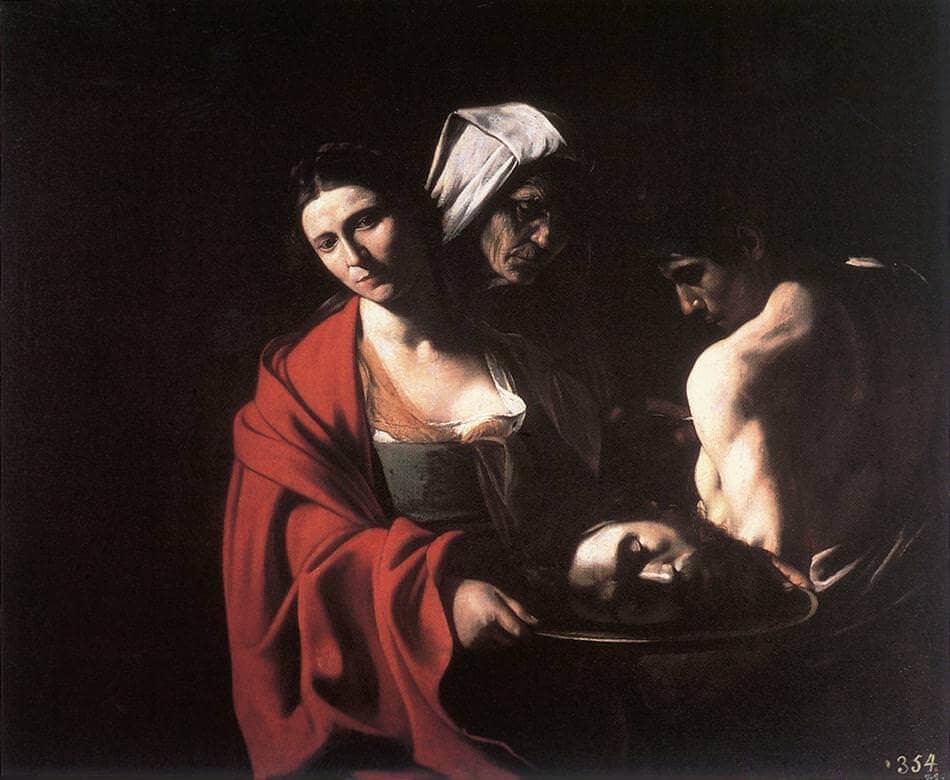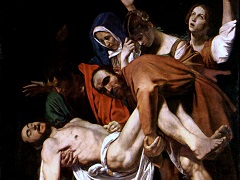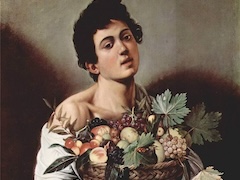Salome with the Head of John the Baptist, 1609 by Caravaggio

This picture was discovered by Longhi in a Swiss private collection in 1959 and linked by him to a reference made by Bellori concerning a very late rendering of the subject which Caravaggio was said to have sent from Naples to Alof de Wignacourt in Malta in hopes of regaining the Grand Master's favour after the artist's expulsion from the Order of the Knights of St. John. But that picture is far more likely to have been the one in the Palacio Real, Madrid, which, with its quiet, melancholic mood and colouring has definite affinities with works of Caravaggio's immediately preceding Sicilian sojourn. The National Gallery picture, on the other hand, is distinguished by a handling and raking light similar to canvases of 1606/07 and has an obvious link with the two Flagellations of 1607 in the person of the executioner, who is facially similar to his counterparts in those paintings.
There is also, as noted by Michael Kitson, a strong similarity between the head of Salome and that of the Virgin in the Madonna of the Rosary. It is, of course, still possible, although less likely, that the work was executed in 1609/10, but the fact that it was almost certainly painted in Naples is attested by the existence of a very old copy in the nearby Abbey of Montevergine at Avellino. The National Gallery picture is in reasonable condition and has only small passages of repainting, such as the executioner's left hand, but, despite the widespread acceptance of the work by scholars as an original, the National Gallery itself retains some doubts as to its authenticity and catalogues it as 'Ascribed to Caravaggio'. Some tempera, as well as oil paint, appeared to be present in a sample of paint taken from Salome's white scarf.
















